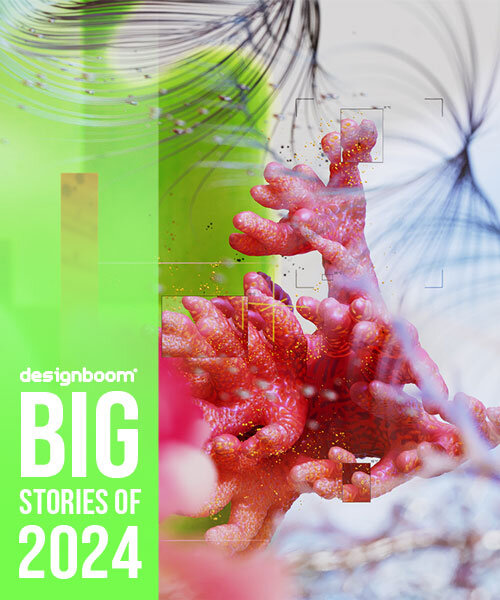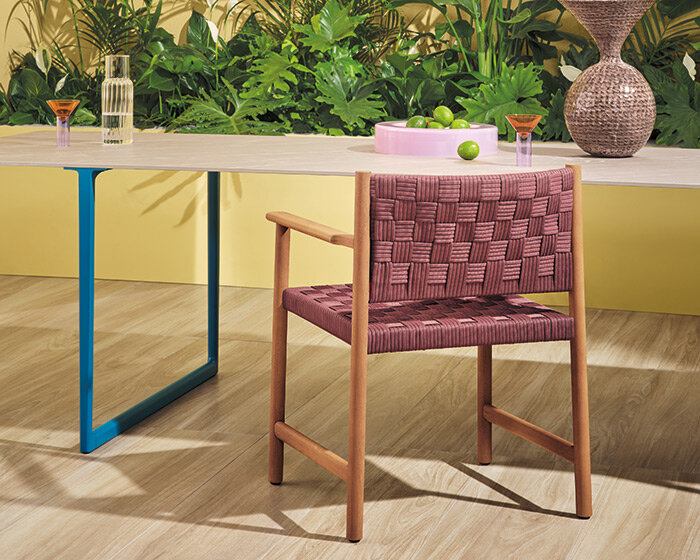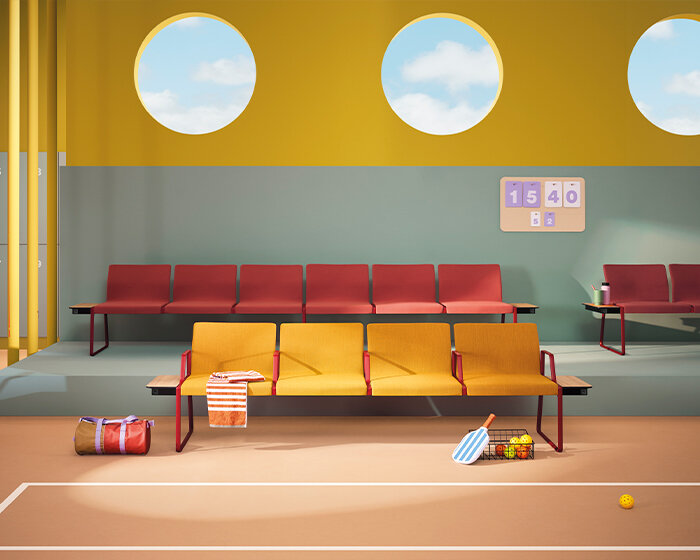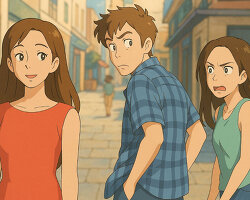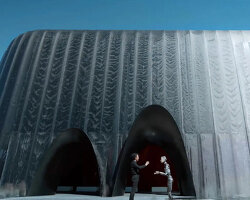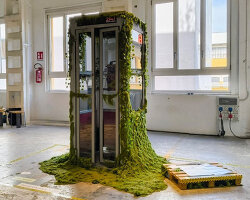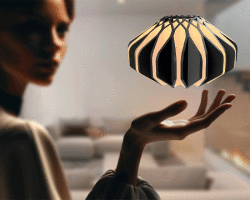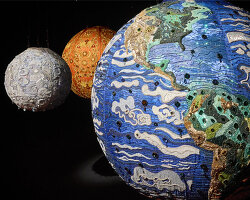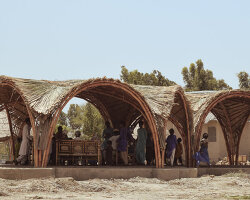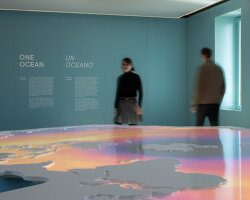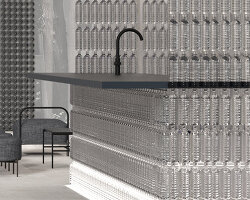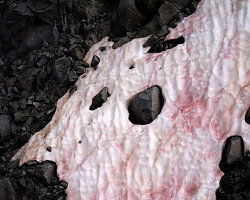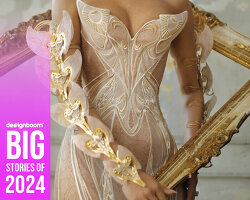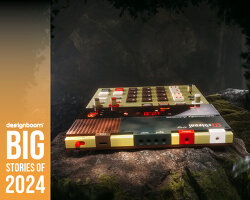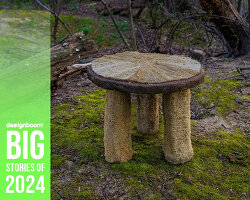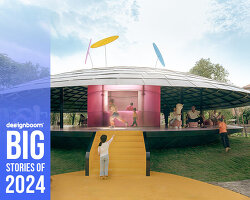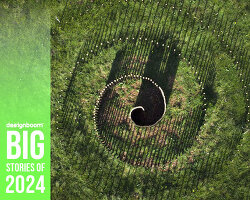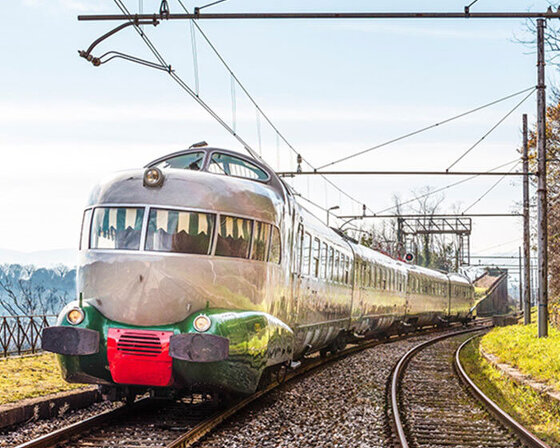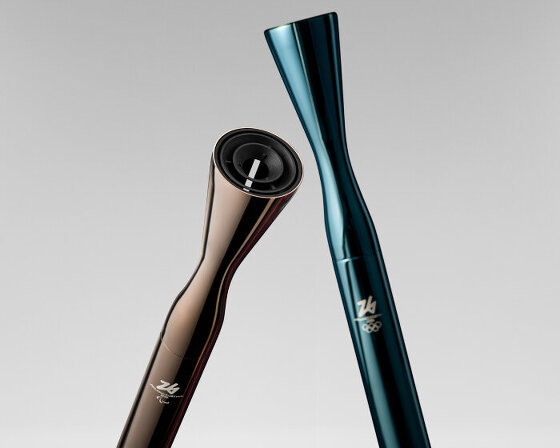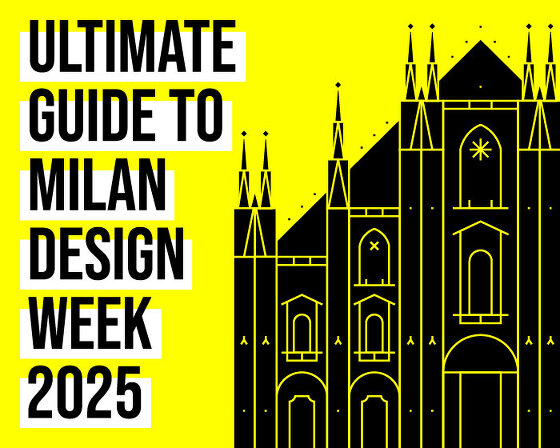A LOOK BACK AT 2024’s Top 10 social impact stories
As we navigate a world marked by pressing social, environmental, and cultural challenges, the role of architecture and design in driving meaningful change has never been more vital. This year, a growing number of creative projects have stepped up to address critical global issues, from climate resilience to social equity, demonstrating the transformative power of design. From architects reimagining spaces to foster community connections and rising residential needs, to designers crafting innovative solutions that tackle inequality, displacement, and sustainability, these initiatives reflect a commitment to making the world a better place. Rooted in context and often shaped by cultural narratives or urgent ecological needs, these projects showcase how design can inspire solutions and spark awareness, creating lasting social impact. Here, we spotlight some of 2024’s most impactful design projects featured in designboom, celebrating their profound social contributions.
From designers transforming oil rigs into plastic-filtering ecosystems powered by mealworms, to exploring the innovative intersection of sustainability and AI, through its ability to provide insights into global warming, we highlight the year’s most thought-provoking BIG stories dedicated to social impact submitted by our readers.
DADA PROJECTS & GOOGLE DEEPMIND VISUALIZE HOW AI CAN UNCOVER IMPACTS OF GLOBAL WARMING
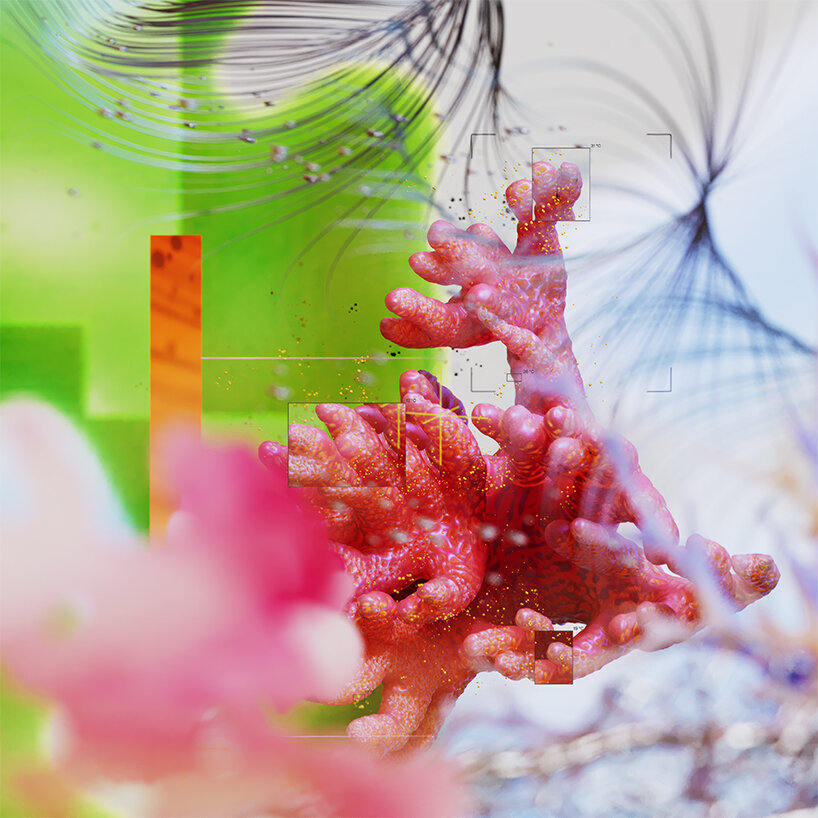
image courtesy of Dada Projects
The all-female team at Dada Projects, led by Christina Worner, teams up with Google DeepMind to delve into the intersection of AI and sustainability. Two new films, poetically visualized by the 3D motion studio, illustrate how this technology can provide a deeper understanding of global warming and its impacts on ecosystems, while enhancing the prediction of extreme weather events.
The first film, AI for Sustainability, highlights AI’s ability to analyze vast datasets, both real-time and historical, to gain insights into global ecosystems, and to predict and mitigate risks. Especially in preserving vital marine ecosystems like algae’s efficient CO2 absorption. The second film, titled Weather, Climate, and Nowcasting, visualizes various stages of weather scenarios, showcasing AI’s crucial role in forecasting disasters.
read more here
LOW-COST REPLICABLE TINY HOUSE ADDRESSES INDIA’S RESIDENTIAL NEEDS WITH ITS ADAPTABLE INTERIOR
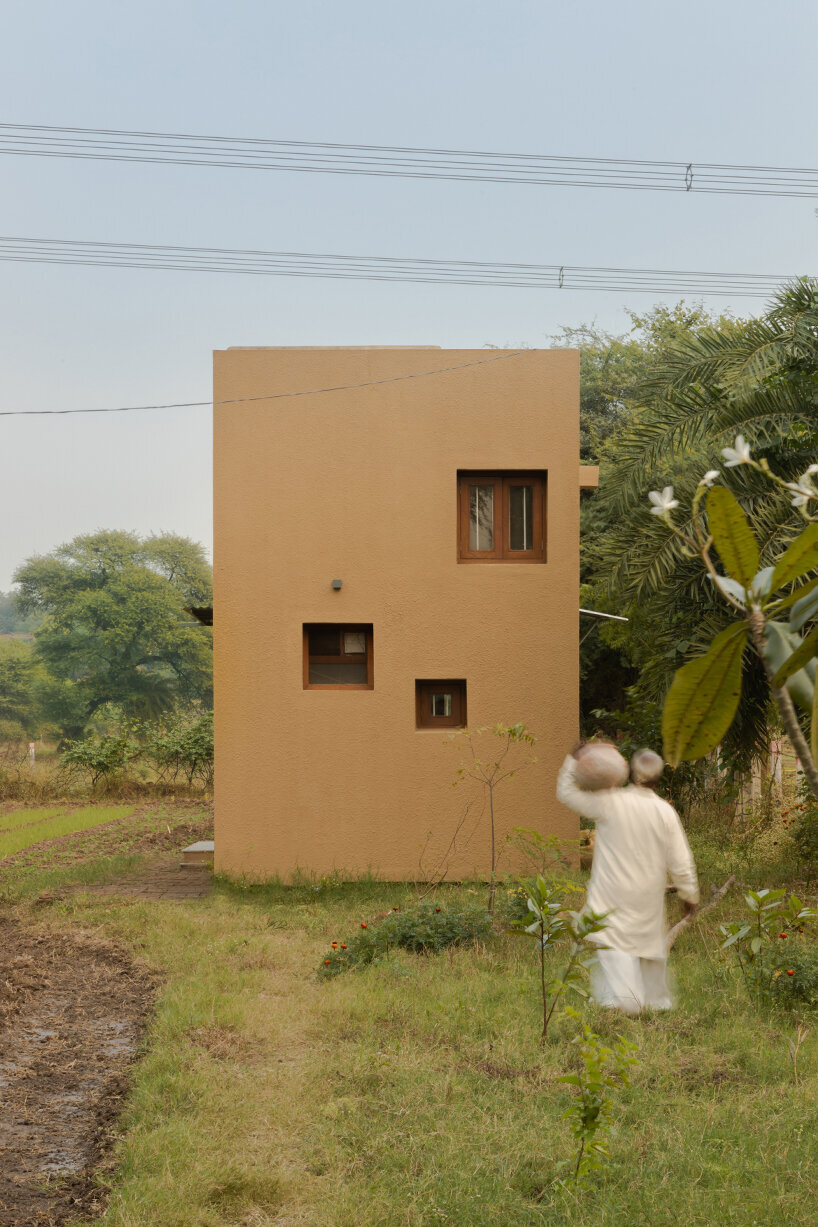
image by The Space Tracing company, courtesy of Harshit Singh Kothari and Tanvi Jain
Harshit Singh Kothari and Tanvi Jain reveal the Tiny House, a compact residence that serves as a prototype for affordable living in Indore, India. The house, built with concrete foundations, a concrete frame structure, and brick infill walls, uses standard construction methods. Allowing for easy replication without specialized techniques or expensive technology, the building comfortably accommodates a family of four. The dwelling occupies a minimal footprint of 19.5 sqm, with an additional 6 sqm of spill-out space.
Despite its modest size, the interior feels expansive, thanks to a single large volume that adapts to multiple daily functions. This space is divided into a mezzanine above and a toilet and storage area at the rear. The building is approached from the east through a semi-open area, avoiding the conventional layout of separate living, dining, and sleeping zones. Instead, it features flexible spaces that can be reconfigured based on the needs of its residents, such as a daybed that transforms into a double bed at night.
read more here
THESE BIODEGRADABLE CAPS TRANSFORM ANY PET BOTTLE INTO A PORTABLE WATER FILTRATION SYSTEM
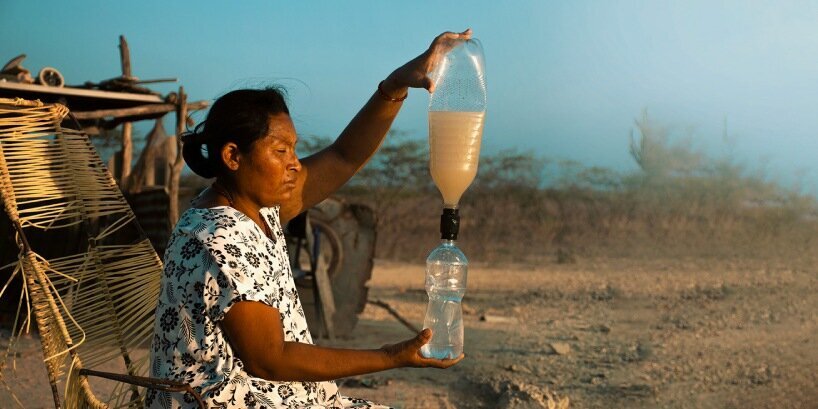
image courtesy of Ogilvy Colombia
In Colombia, about 3.7 million people lack access to clean and safe drinking water, a situation worsened by a devastating drought in 2024. Many affected communities reside in remote areas, facing extreme heat and relying on scarce water supplies that are often contaminated. In response, Ogilvy Colombia partnered with Filsa Water, the Colombian Red Cross, and Baylor International to provide an immediate solution for the world’s water crisis. Transforming the universal bottle cap into a powerful water filtration system, the 3D printed device allows safe water to be purified as it flows through, increasing the pH, adding hydrogen, reducing impurities by 70%, and eliminating 90% of heavy metals.
read more here
INXECT ISLAND REPURPOSES OIL RIG FOR PLASTIC-FILTERING ECOSYSTEM POWERED BY MEALWORMS
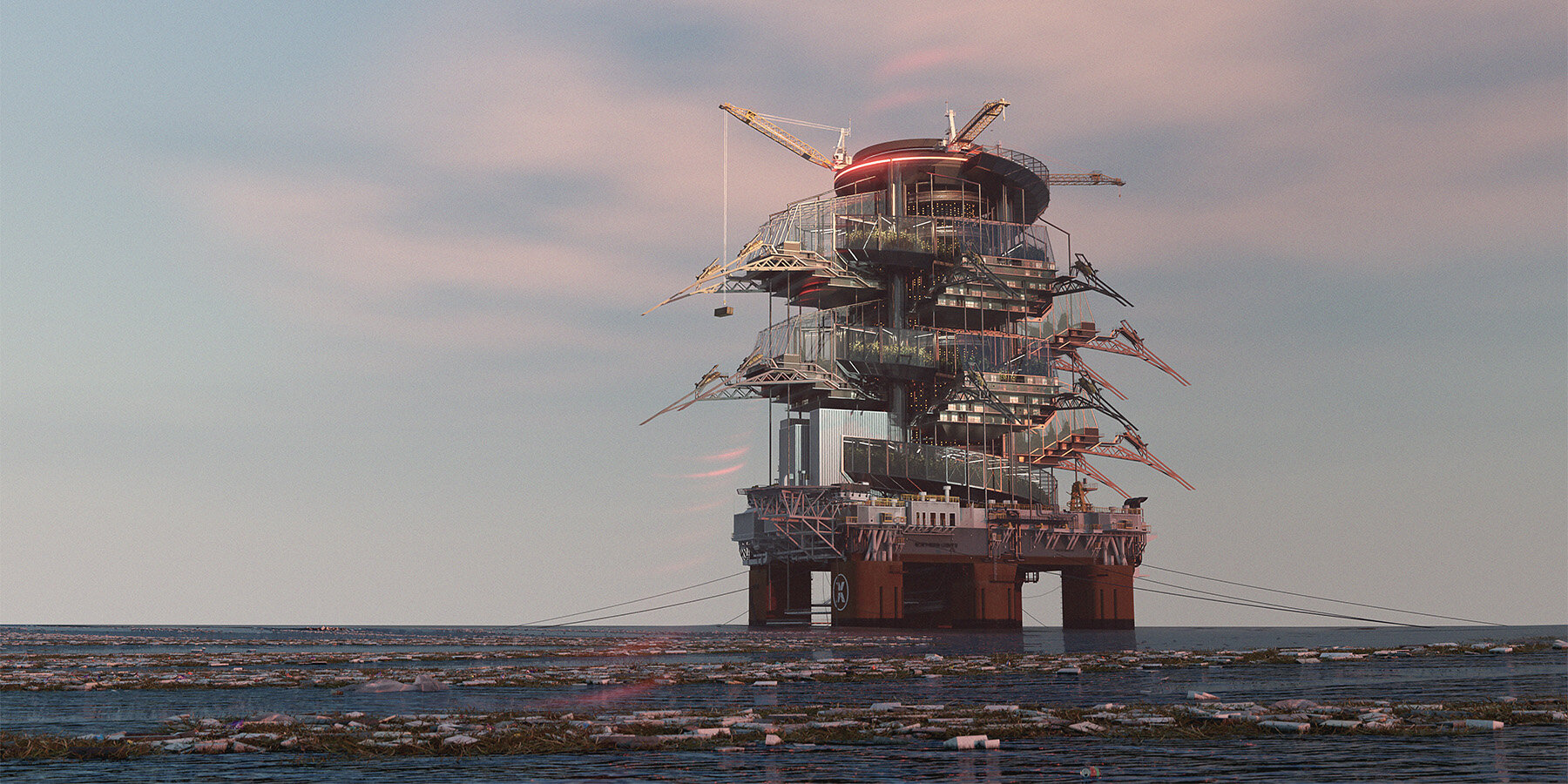
image courtesy of Pavels Hedström
Inxect Island (IXI) envisions a future where fossil fuel infrastructure is repurposed into resilient, autonomous homes in the face of the escalating climate crisis. The concept by Pavels Hedström addresses the mounting issue of ocean plastic waste by transforming old oil rigs into plastic-filtering ecosystems. Thriving on these rigs are self-sufficient villages, vertical gardens, and photosynthesis parks all fueled by mealworm fertilizers who break down toxic plastic into protein, creating a low carbon footprint solution to various global challenges.
read more here
THE LITERACY PEN HELPS ILLITERATE PEOPLE TO START WRITING AND LEARNING TO READ, INSTANTLY
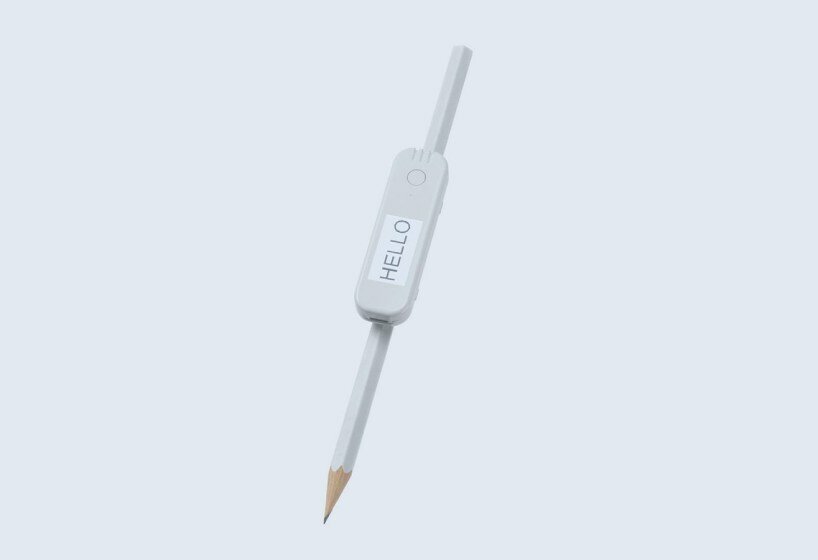
image courtesy of World Literacy Foundation, Media.Monks
The Literacy Pen, developed by The World Literacy Foundation and Media.Monks, is a groundbreaking educational device designed to enable illiterate individuals to start writing and learning to read, instantly. Open source and compatible with all standard pens on the market, it utilizes an innovative method that combines technology with the essential elements of traditional processes. Users only need to attach the device to their pen and speak their desired words into the built-in microphone. The voice dictation technology then accurately transcribes these words onto the digital screen, letter by letter, facilitating direct copying onto paper and enhancing the learning process for all. The device further ensures an effective learning experience by focusing on key aspects of literacy development, such as written and visual repetition. Its compact size, lightweight, and ergonomic shape additionally make it accessible and comfortable for users of all ages and abilities, further promoting inclusivity in education.
read more here
HOLCIM FOUNDATION AND RUMAMA RE-ADAPT BAMBOO BUOYANT ARCHITECTURE IN INDONESIA
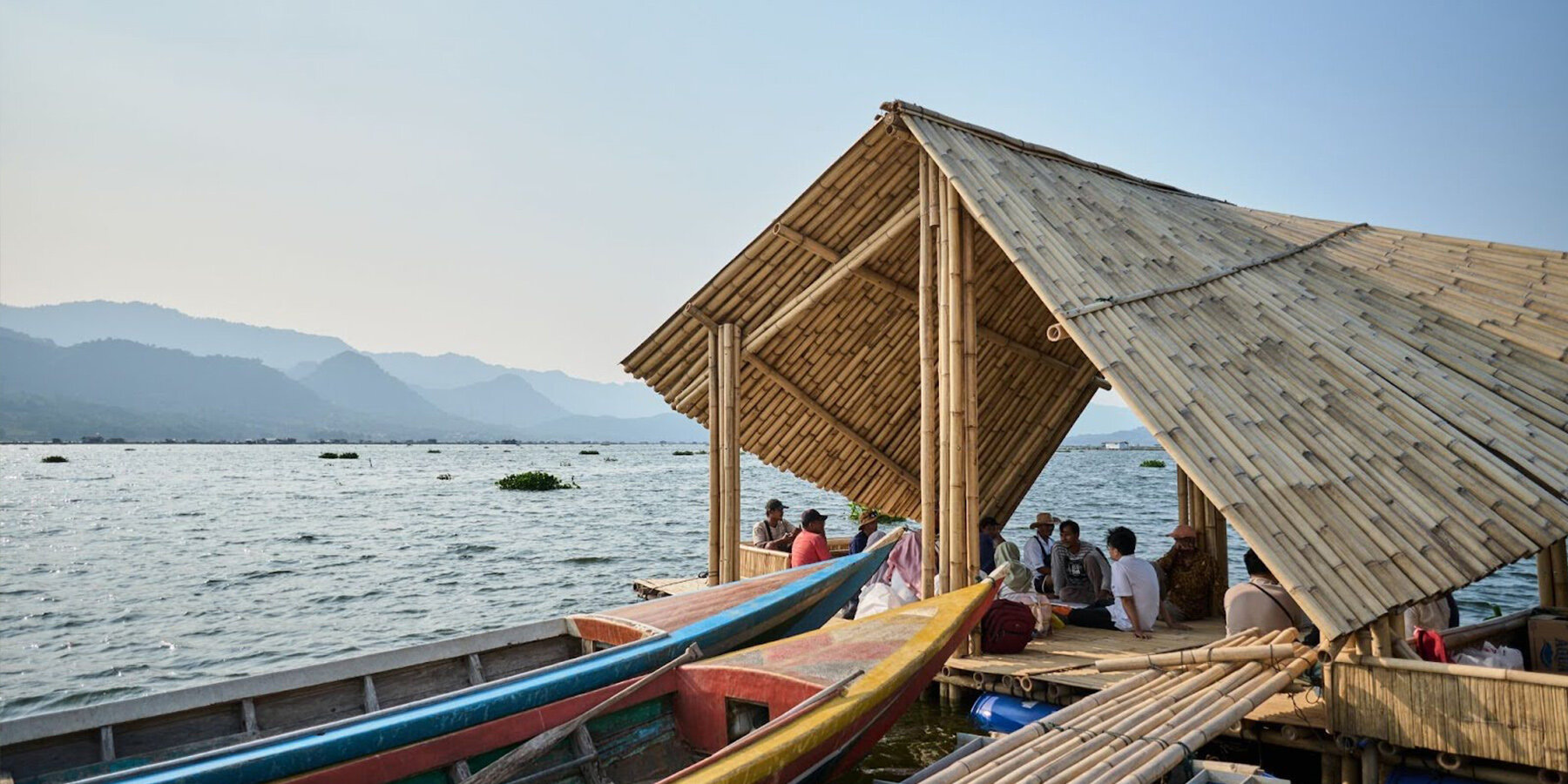
image courtesy of Holcim Foundation, Rumama
In a bid to invent a more relevant typology, Holcim Foundation and Rumama explore the untapped potential of water vernacular architecture in Indonesia. Termed ‘re-adaptation,’ this initiative seeks to upgrade buoyant amenity structures to suit contemporary needs and ensure more sustainable practices in the future. Deriving from the behavior of the traditional buoyant structure, the team conducted a research project on Jatiluhur Reservoir in West Java, where local water communities dwell and water vernacular structures exist.
Embracing holistic, transformational, and transferable principles, the project integrates community participation and prioritizes the integration of local bamboo and expertise. The resulting forms of Buoyant Amenity are utilized as a fishing tourism center and community town hall that are managed together by the community, ensuring the continuation of re-adaptation.
read more here
TOKYU BIRD HOUSE SUPPORTS BIODIVERSITY ACROSS JAPAN’S DENSELY POPULATED URBAN SETTINGS
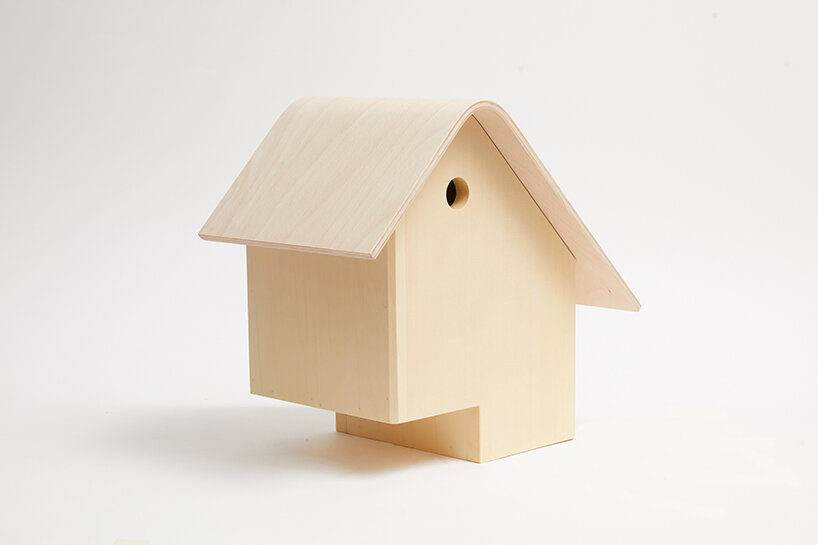
image courtesy of Ryusuke Nanki
The Tokyu Bird House is a small-scale architectural intervention aimed at supporting biodiversity by creating suitable habitats for the Japanese tit. The project has been conceived by Ryusuke Nanki in collaboration with Tokyu Land Corporation, an urban developer known for its commitment to ecological projects in central Tokyo, and Tendo Mokko, a renowned Japanese furniture maker.
Bridging their sensibilities, the birdhouse integrates human housing concepts with natural considerations to foster nesting in densely populated urban settings, with a simple wooden design. In February 2024, the design teams installed a series of Tokyu Bird Houses across commercial spaces in Tokyo and Yokohama.
read more here
BIOMATTERS COMBINES MYCELIUM, CLAY AND INDUSTRIAL WASTE TO 3D PRINT VESSELS AND BOWLS
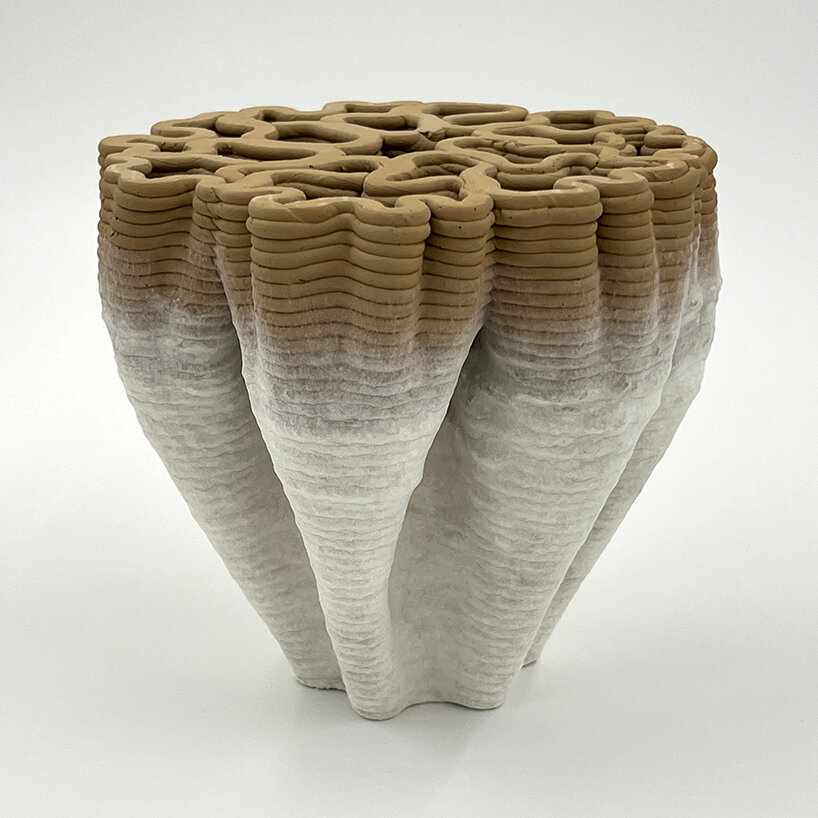
image courtesy of bioMATTERS
New York City and London biodesign studio bioMATTERS mixes mycelium, clay, and domestic and industrial waste materials to 3D print bio-digitally designed vessels and bowls. The family of interior objects glimpses at the potential of 3D printing to generate robust and recycled objects for homes and spaces using organic and waste materials such as mycelium and clay. bioMATTERS aims to create biodegradable products with the entrance of its new series named MYCO-CLAY, adopting novel bio-fabrication workflows that combine mycelium, or fungal networks of entangled hyphae filaments, with earthenware clay, a natural sedimentary material with high plasticity.
read more here
PAUL DE LIVRON CRAFTS WOODEN WHEELCHAIR FOR THE POPE WITH BURNT OAK BEAMS FROM NOTRE-DAME
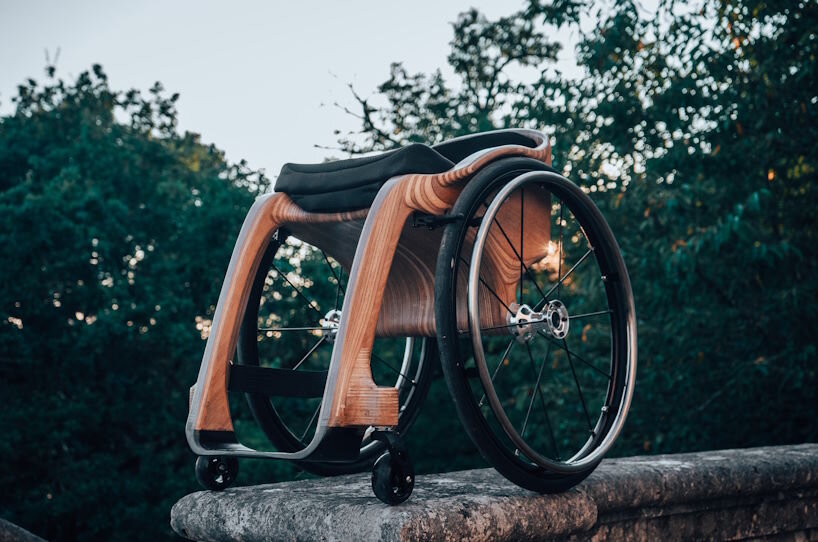
image by Privat Millet
French craftsman and designer Paul de Livron has unveiled the Apollo Wooden Wheelchairs, an innovative approach to mobility aids that blends eco-conscious design with aesthetic appeal and high performance. Crafted from wood, the wheelchairs stand as the world’s first (and only) of their kind, with their first beneficiary being arguably the most famous person on Earth – Pope Francis. This papal model ambitiously incorporates two pieces of completely charred 12th-century oak beams from the Notre-Dame Cathedral for the armrests.
Recognizing the potential to address mobility challenges on a global scale — beyond the Pope’s personal collection — de Livron seeks to provide accessible solutions in developing countries, utilizing locally available resources and inexpensive and incomplex tools to create a variety of customized wheelchairs. With no other such equivalents on the market, the Apollo Wooden Wheelchairs could thus be created as infinite number of new models catering to the diverse needs of children, the elderly, the active, the sedentary, the poor, and even the rich.
read more here
RK COLLECTIVE TURNS DISCARDED HEADSCARVES DONATED BY IRANIAN WOMEN INTO STADIUM SEATS
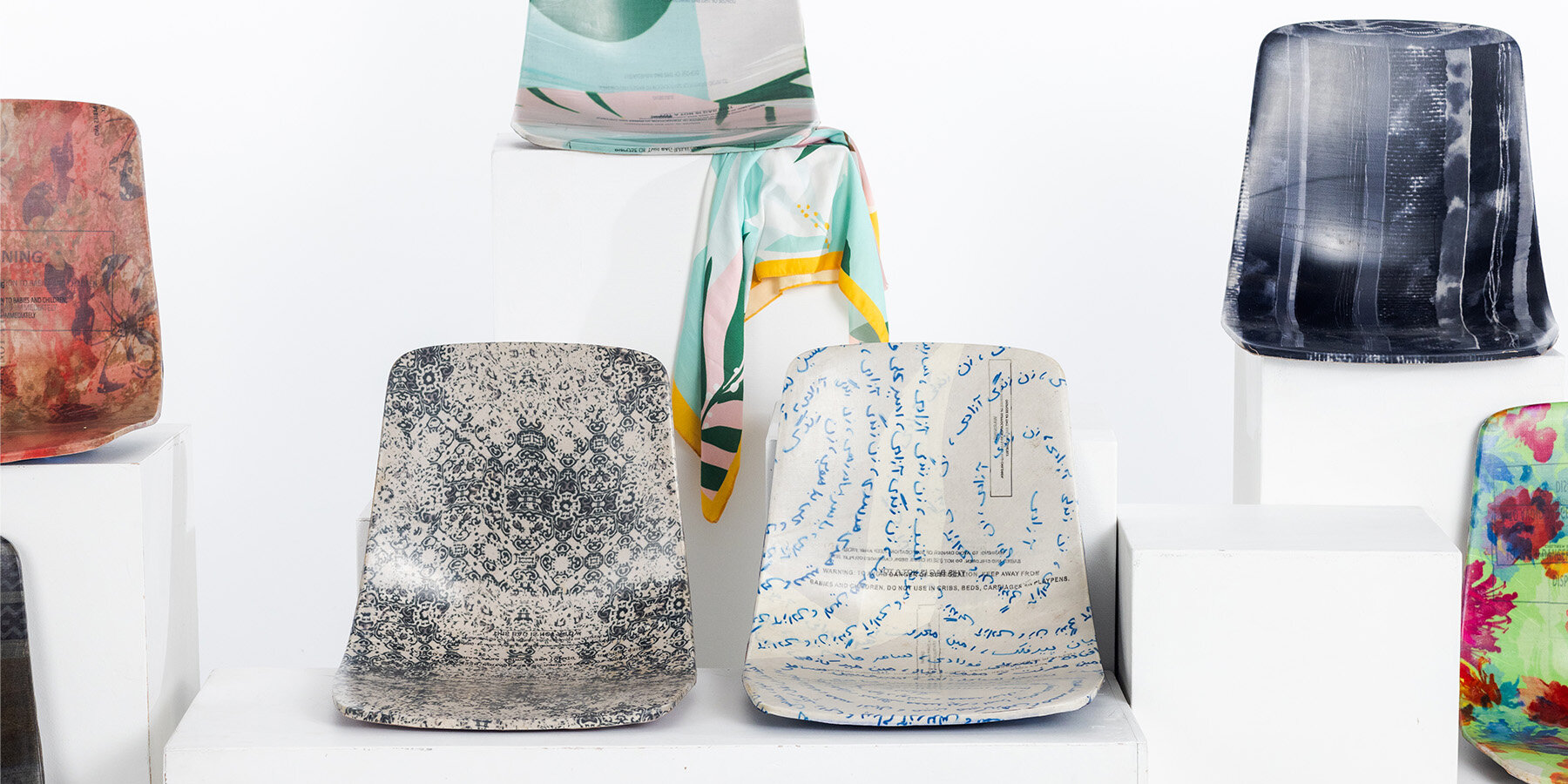
image by Debbie Gallulo, courtesy of RK Collective
RK Collective introduces Crafted Liberation, a project that transforms discarded headscarves into stadium seats as a symbol of Iranian women’s resilience and their pursuit of gender equality. The Sydney-based design team uses advanced lamination and pressure molding techniques to create durable seating from a composite of recycled headscarves and plastic waste.
Utilizing circular material innovation, the project transforms over 491 headscarves donated by Iranian women into a lightweight composite material for seating. The initiative aims to reclaim spaces of exclusion, foster collective action, and spark dialogue about the role of design in addressing social and cultural challenges. ‘In Iran, women have been banned from entering stadiums since 1981. The stadium seat represents more than just functionality—it’s a symbol of exclusion. By using these discarded headscarves to create seats, we reclaim and redefine the narratives of suppression into stories of empowerment,’ Nila Rezaei, one of the RK Collective founders, explains.
read more here
see designboom’s TOP 10 stories archive:
2023 — 2022 — 2021 — 2020 — 2019 — 2018 — 2017 — 2016 — 2015 — 2014 — 2013
happening now! in an exclusive interview with designbooom, CMP design studio reveals the backstory of woven chair griante — a collection that celebrates twenty years of Pedrali’s establishment of its wooden division.
